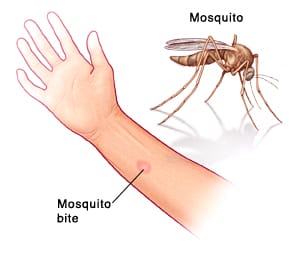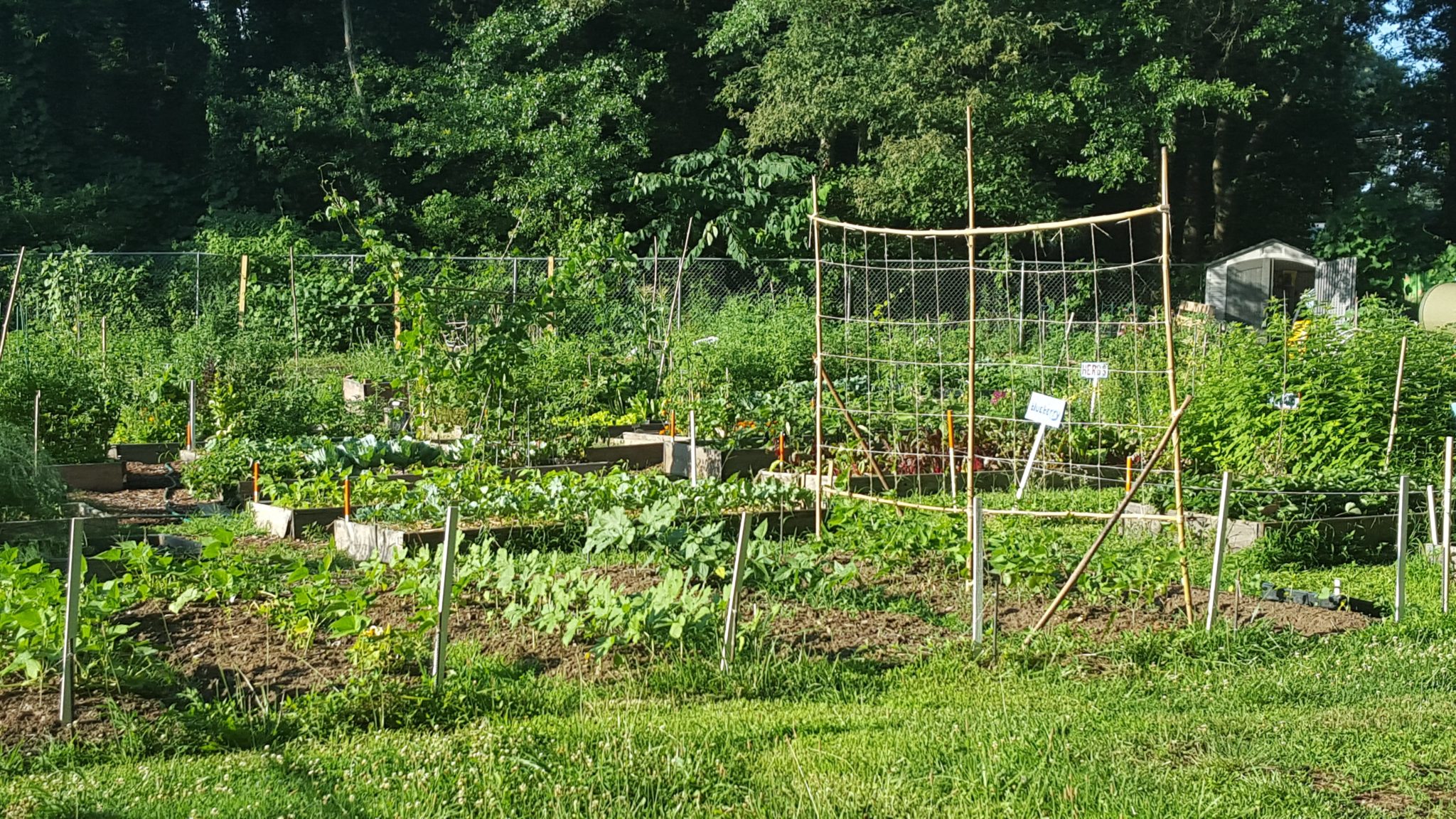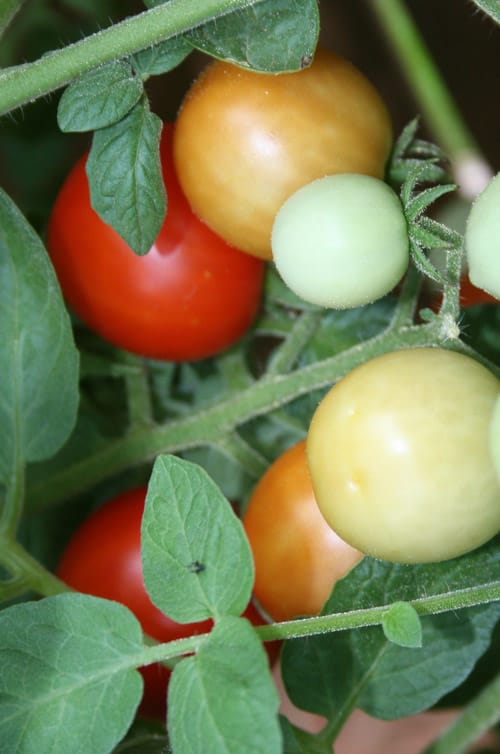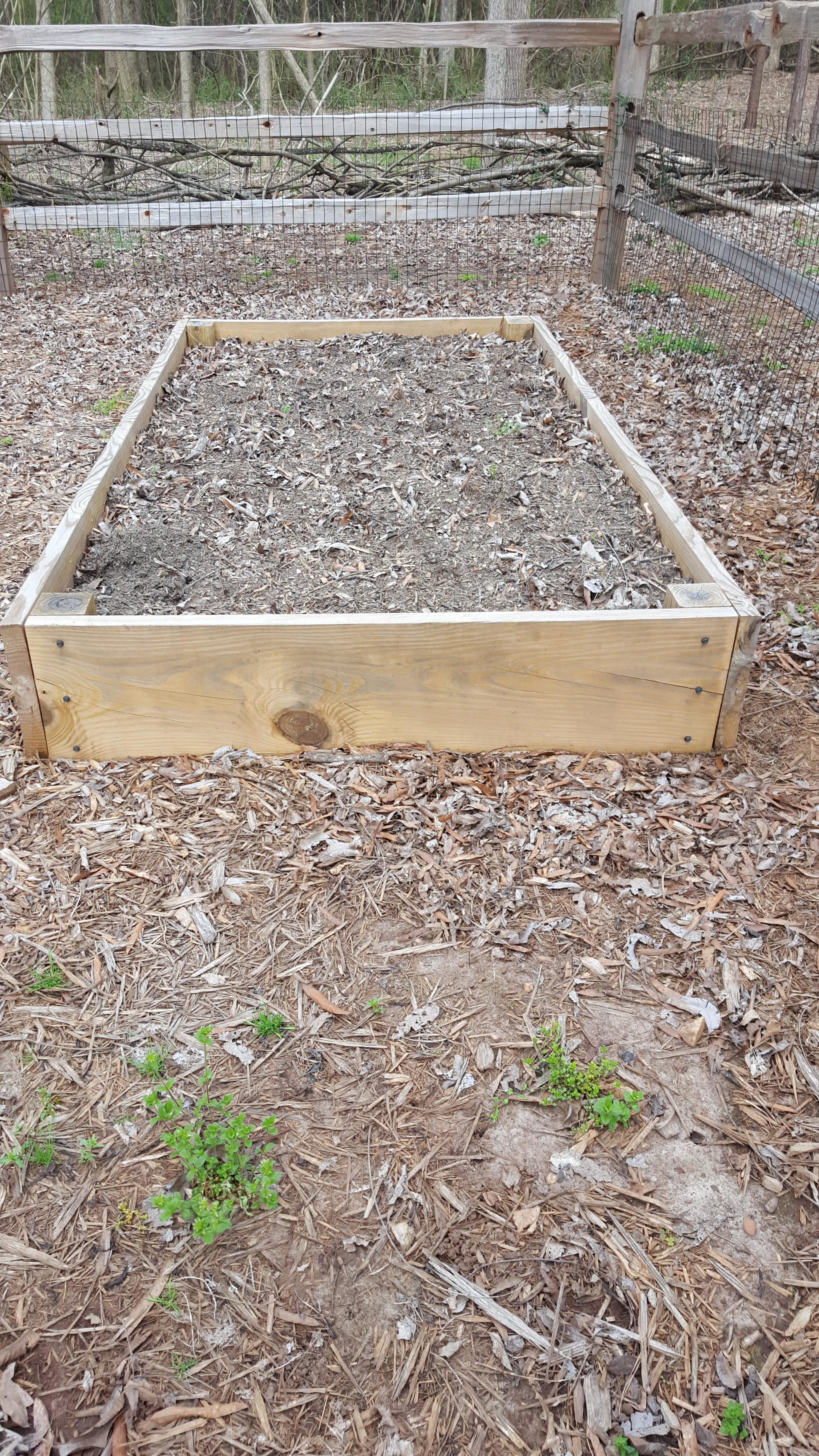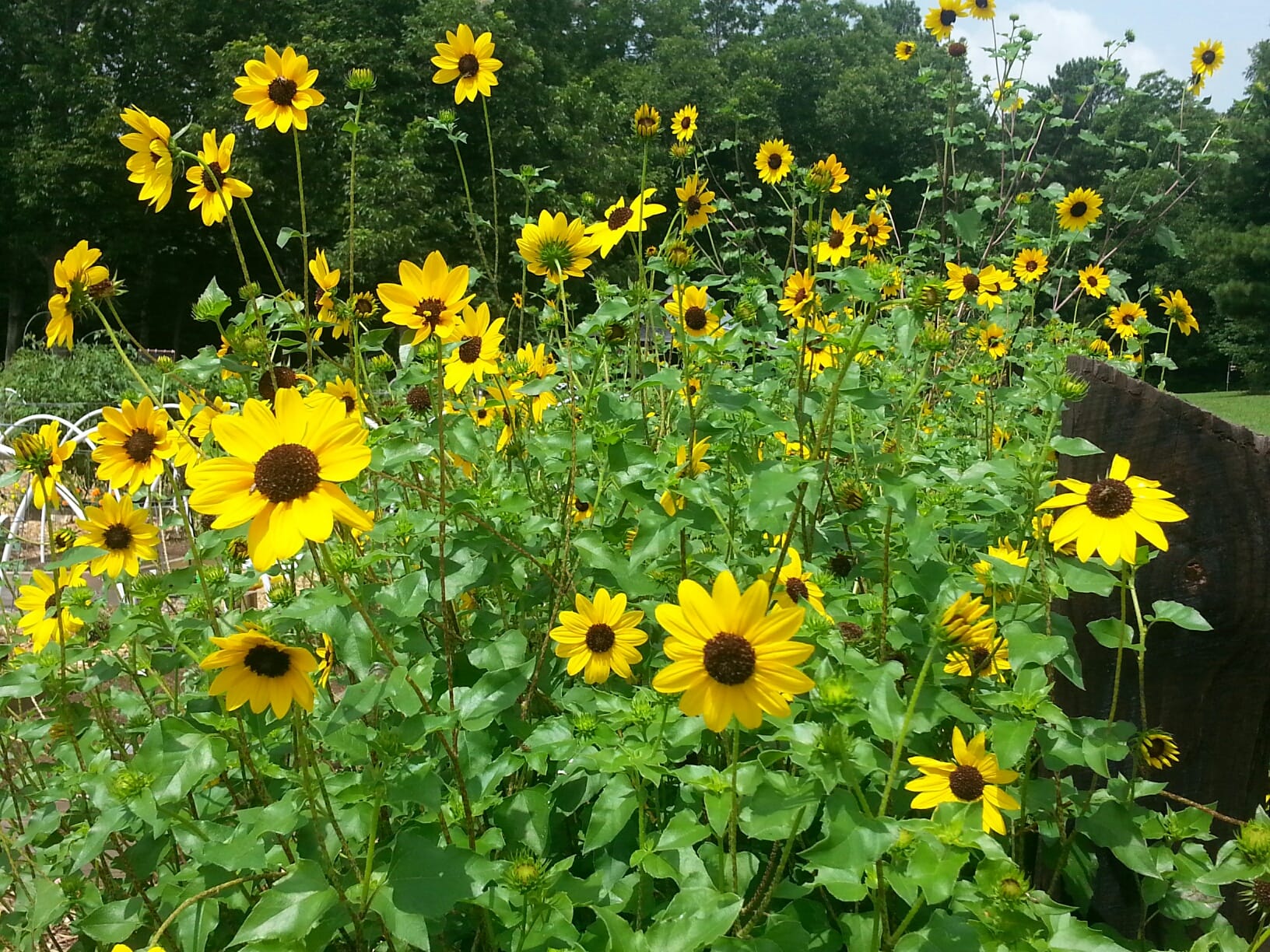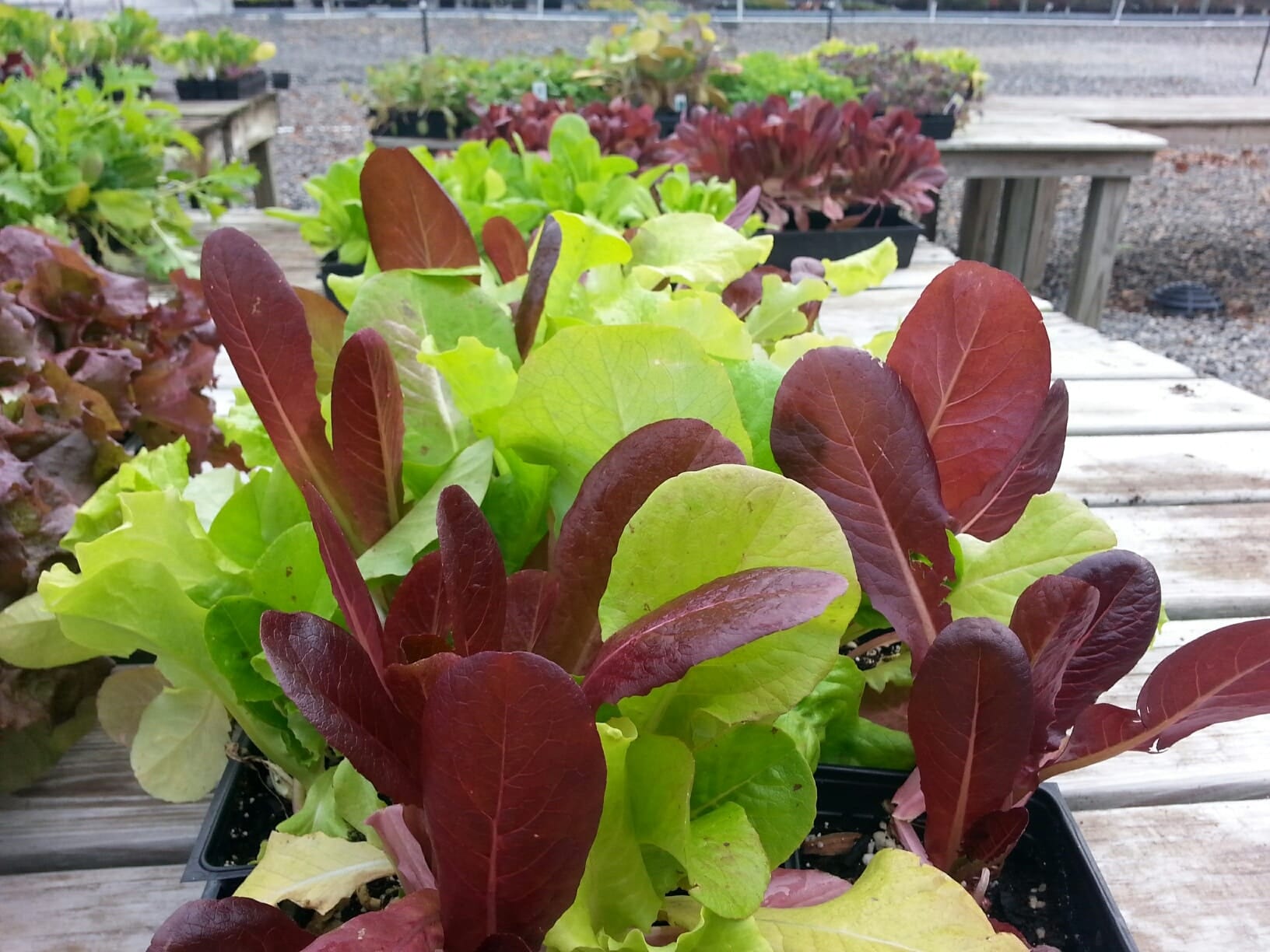Are you especially concerned about mosquitoes this summer as you work in your garden? Do you wonder how to care for your bird baths so that your birds are happy but you are not creating a breeding pond for mosquitoes? We had the opportunity to talk with University of Georgia’s mosquito specialist, Elmer Gray, and asked him for some research-based mosquito information.
Community and School Gardening in Georgia
Food for a Thousand – A Garden of Community
St. Patrick’s Episcopal Church’s Food For a Thousand garden in Albany, Georgia is a true lesson in community. Dedicated church parishioners and Dougherty County Master Gardener Extension volunteers (MGEVs) maintain this space and harvest the produce. Dougherty County 4-H volunteers even lend a hand. All of the produce is donated to two local food pantries and a rescue mission. This is an impressive operation.
Your School Garden, STEM, and UGA Extension
The Georgia Department of Education’s STEM (science, technology, engineering, and math) day is May 6th. In anticipation of that day we want to make sure that schools know what STEM resources are available to them through UGA Extension.


According to information from Gilda Lyon, state STEM coordinator, there are 28 STEM certified schools in Georgia at this time. There will be many, many more applying for certification. The certification process is very involved and once a school is certified it will need to be recertified every five years.
Earth Week 2016
Happy Earth Week 2016. How are you celebrating?
I am celebrating with the butterflies and bees! As the force behind the Pollinator Spaces Project I decided I needed to step up the pollinator habitat in my own garden in time for Earth Week 2016. In one part of the garden I added three baby sage (Salvia microphylla ‘Hot Lips’) plants. I have always loved the bi-colored flowers and they really attract butterflies.
April Gardening Chores for Georgia
It is that time! Spring planting for summer vegetables. Before planting check your soil temperatures. Are they 60-65 degrees F and rising? Look at the medium range weather forecast. Any frost or temperatures below freezing predicted?
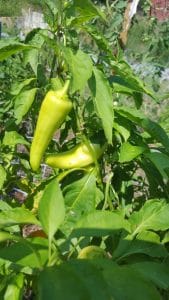
UGA Extension’s Vegetable Gardening Calendar give us this advice for April:
- Plant your choices of the following “warm-season” or “frost-tender” crops: beans (snap, pole and lima), cantaloupe, corn (sweet), cucumbers, eggplant, okra, field peas, peppers, squash, tomatoes and watermelon.
- Plant tall-growing crops such as okra, pole beans and corn on the north side of other vegetables to avoid shading. Plant two or more rows of corn for better pollination.
- Make a second planting within two to three weeks of the first planting of snap beans, corn and squash.
- Within three to four weeks of the first planting, plant more lima beans and corn. Remember: for better pollination, plant at least two or more rows.
- Be sure to plant enough vegetables for canning and freezing.
- Cultivate to control weeds and grass, to break crusty soil and to provide aeration.
- Maintain mulch between rows.
- For the crops planted earlier, side-dress as described above.
- Plant tender herbs.
- Remember: Do not work in your garden when the foliage is wet to avoid spreading diseases from one plant to another.
Happy Gardening!
Add Organic Matter, Water Deeply for Healthy Tomato Plants-A Guest Post by Michael Wheeler
This week we are happy to have UGA Hall County Extension Agent, Michael Wheeler, as a guest blogger to give us a refresher on growing tomatoes. Michael writes….
Homegrown vegetables are a must have for many Southerners during the summer.
The one vegetable, well technically a fruit, which makes everyone’s mouth water in anticipation is the tomato. The folks I know always say the first tomato of the season is the best.
It is a known fact that homegrown tomatoes are much better than anything you can buy from the grocery store. Nothing can beat it.
Whether or not you are trying to grow tomatoes for the first time, or this is your 30th season, there are some tips to follow to make sure your harvest is plentiful.
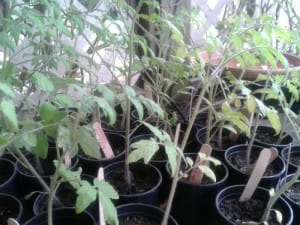
Before you plant, incorporate four inches of new organic matter. This will encourage the plants to explore and get established quickly.
Plant your tomatoes deep. At planting, remove the leaves from the bottom of the plant and bury about two-thirds of the stem. This deep planting causes the plant to grow roots up and down the stem that is in the ground. This extra root system will make the plant stronger and more stable as it matures.
As a UGA Extension county agent, I always tell my clients to use mulch when you plant anything. Well the same goes for veggies.
A good 2- to 3-inch layer of wheat straw will go a long way to hold back weeds, keep the plants clean from rainfall and keep the soil moist in the middle of summer.
Speaking of rain and moisture, what if we don’t get any during the summer? This is where many of the problems in growing vegetables come from — improper watering.
Water your plants so the soil stays fairly evenly moist, avoiding the extremes of it being parched and then flooded. When you do water, keep the water at the base of the plant. Wetting the leaves will only encourage diseases.
Give your tomatoes fertilizer when they are first planted. After that, they do not need much fertilization until the first tomatoes are the size of a dime or so.
Pushing your tomatoes to grow will only encourage the growth of leaves and stems, but not much fruit.
If during the summer you have problems growing tomatoes, stop by your local UGA Extension office for help identifying pests or diseases.
Thanks, Michael! Happy Tomato Gardening!
How much soil do you need to refill your raised beds?-A Guest Post by Steve Pettis
This week we are excited to have Steve Pettis, UGA Extension Agent for Rockdale County, join us for a math lesson on raised bed gardening! Steve writes….
If you have have raised beds eventually you will need to add more soil. Over time soil compacts, organic matter dissipates, and soil erodes. So, what was once a box full of soil can end up half empty.
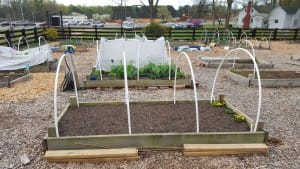
Bagged soil is sold by the square foot. How do you determine how many square feet of soil you need to refill the beds?
I would suggest using the formula for determining volume of a rectangular prism –
vol. of rectangular prism = a b c or length x width x height
Multiply the width, height and length in inches. Divide that by 12 inches to get cubic feet. Bags of soil will say how many cubic feet of soil are in the bag. Divide the number of cubic feet in a bag into the cubic feet of your space and you have the number of bags needed.
Thanks, Steve! Happy Gardening!
Horticultural Therapy Week in Georgia
In honor of National Horticultural Therapy Week (March 20th – 26th) we have asked Katrina Fairchild, a registered horticultural therapist (HTR), to share some thoughts on these types of gardens. Katrina writes:
Thinking back on my time of working with and developing a program for teenage at-risk students, I present you with a series questions to ask yourself when deciding to undertake this significant project of offering and developing horticultural therapy (or therapeutic horticulture).
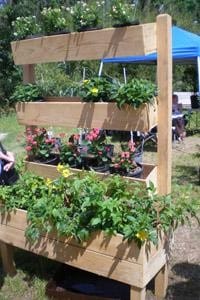
What’s the primary purpose of offering the program and the garden?
Is it for profit? Social or emotional therapy? Educational opportunity, be it vocational or academic? Purposeful in terms of feeding local families in need, or teaching certain socioeconomic groups to eat healthier to keep certain diseases at bay? Simply aesthetic? This key question begins to address the size of the garden, its proximity (location), the people it serves, its longevity, community resources to assist you, and the big question of “how much will it cost?”
Do I have the time to dedicate to planning and running a whole year of gardening?
Who will help me keep the garden going when I have a class to teach? What happens in the summer? Will I need to do one-on-one supervising in the garden or as a group?
What’s involved in programming a school garden?
It’s not just planting veggies, herbs and flowers as the seasons arrive; it’s pre-planning what to buy, how much space to dedicate, the material used, finding available resources, the return on what goes in the ground (is there continuity, for example, like seed-saving that turns into yet another session/project), planting for the holidays, student’s birthdays, special causes, and educational opportunities, just to name a few.
Am I making it fun, interesting, stimulating?
It’s very important to make the whole or a part of the garden personal and relevant. It should reflect the kids’ personalities, age, character, and life. To avoid mental or physical disengagement, you may need to plan a special “personal” square plot versus group gardening. One student I had was only intrigued by goth, so we stuck with black pansies and tulips. Play their music (not yours) while gardening. Make it relevant now: for example, select seeds that germinate quickly, and bring in samples they can eat now. Make it tangible: buy seedlings instead of seeds.
What timing and program constraints must I consider to satisfy the kids with VAK learning modalities?
An hour’s worth of outdoor gardening may end up being three different projects to capture and hold the interest of those who are visual, auditory and/or kinesthetic. More programming means less time in the garden.
How can I make this less work for me?
Get them involved from the beginning! From concept to crop, it’s their place. Get them involved in the planning stages of cost, design, layout, building, selecting favorite or new plants, colors, garden art, and what to do with excess crop. Assign or let them pick jobs or lead roles. Ownership is key.
How can I get the parents and community involved (and funding coming)?
The program is only as good as its longevity and engagement. Post photos of the garden and gardeners on social media. Send press releases. Maintain an ongoing photo album of the garden and its gardeners that is readily viewed in the classroom as well as online.
Am I making all this too complicated and burdensome?
It can be…unless you keep it simple. Sometimes we get too excited and over-inspired by what can be. Remind yourself to stop and re-analyze often: most things can be simplified. This is true from the types of material used to build the garden to the selection of herbs and vegetable.
Katrina Fairchild, is a registered horticultural therapist (HTR), certified landscaped designer (APLD), GA Certified Plant Professional (GCPP), and avid gardener and nature lover. She can be reached at (678)314-9082 or via her website www.theflowerfly.com.
Thanks, Katrina, for the great information. For more information about National Horticultural Therapy Week visit American Horticultural Therapy Association.
Happy Gardening!
This is the Year to Add Pollinator Spaces to Your Garden
Adding pollinator spaces to your community or school garden is a fabulous idea. If you are a food grower, more pollinators means more pollination and increased food production! Even if you aren’t growing food the benefits of attracting native bees, butterflies, and even honey bees are numerous.
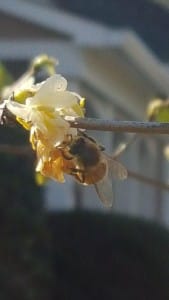
UGA’s Center for Urban Agriculture has created the Pollinator Spaces Project. The mission is to make it easy to add pollinator habitat to any sized garden. The process is easy:
Step #1 Learn
Learn about pollinators and pollinator plants using the Pollinator Spaces Project webpage. The page includes a research-based plant list as well as links to pollinator events around the state and instructions on building bee homes and butterfly puddles.
Step #2 Create
Create your pollinator space. Your garden can be as simple or as detailed as you want to make it.
Step #3 Share
Once your garden is complete and blooming send Becky Griffin (beckygri@uga.edu), our community and school garden coordinator, a photo of your new space. Be creative. If you work in a school garden, get your students in the picture. When sending your photograph include some information about your garden. You will then receive a beautiful certificate acknowledging your participation in this part of Georgia pollinator history.
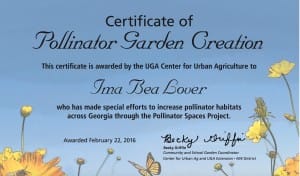
At the end of 2016 we will create a map of Georgia showing the new pollinator spaces and we will design a storyboard telling the story of the project. We will also feature new garden spaces during the year on our UGA Community and School Gardens Facebook page.
During the year we will be sharing pollinator facts, tips, and information through the webpage and the Facebook page. So stay tuned!
Make 2016 the year YOU help pollinators by adding a pollinator space to your garden. For more information about the project contact Becky at beckygri@uga.edu. If you want more information on creating a garden unique to your area your local UGA Extension agent is a great resource.
Happy Gardening!
Spring Greens for your Georgia Garden
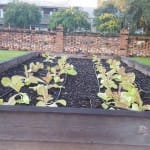 Spring greens are fun to grow in the cool weeks before the heat of summer begins. We have picked three favorites for you to try in your Georgia garden. You will be glad you did:
Spring greens are fun to grow in the cool weeks before the heat of summer begins. We have picked three favorites for you to try in your Georgia garden. You will be glad you did:
Arugula
Arugula is a fast-growing green (about 40-45 days) that comes from the Mediterranean. It has a wonderful, peppery taste that works well in sandwiches as well as salads. It is even popular as a pizza topping.
Drunken Woman
Drunken Woman is a great addition to any garden. These bright green leaves have red, ruffled tips. This lettuce is a loose-leaf type that resists bolting (about 55 days). That makes it a great choice for Georgia. It has a sweet taste and remains crisp and flavorful even when stored in the refrigerator for several days.
Salad Bowl
Salad bowl (about 40 days) is a standard when it comes to spring lettuce. The bright green leaves are ruffled and are a nice addition to any salad. When fully mature it makes a loose head but can be harvested as leaf lettuce.
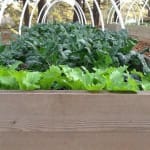 When planting greens in the spring choose loose-leaf varieties instead of head producing ones; you will have more success. You can simply cut off leaves to add to your salads instead of waiting for heads to form. The leaves don’t have to be fully mature to harvest. If we have a short spring and hit those warm summer weeks early, you will be able to enjoy some wonderful salads before the greens bolt. Homegrown greens have much more taste than anything you can purchase at the grocery store.
When planting greens in the spring choose loose-leaf varieties instead of head producing ones; you will have more success. You can simply cut off leaves to add to your salads instead of waiting for heads to form. The leaves don’t have to be fully mature to harvest. If we have a short spring and hit those warm summer weeks early, you will be able to enjoy some wonderful salads before the greens bolt. Homegrown greens have much more taste than anything you can purchase at the grocery store.
These seeds can be purchased at some seed racks at hardware and big box stores. They are easily ordered through seed catalogs. You can direct seed them or start them indoors. Sometimes they can be found as plants in specialty plant nurseries. For detailed instructions on planting these seeds see Lettuce is Luscious in a Georgia Community Garden, a past blog post. As always, your local UGA Cooperative Extension Agent is a great resource.
Happy Gardening!
